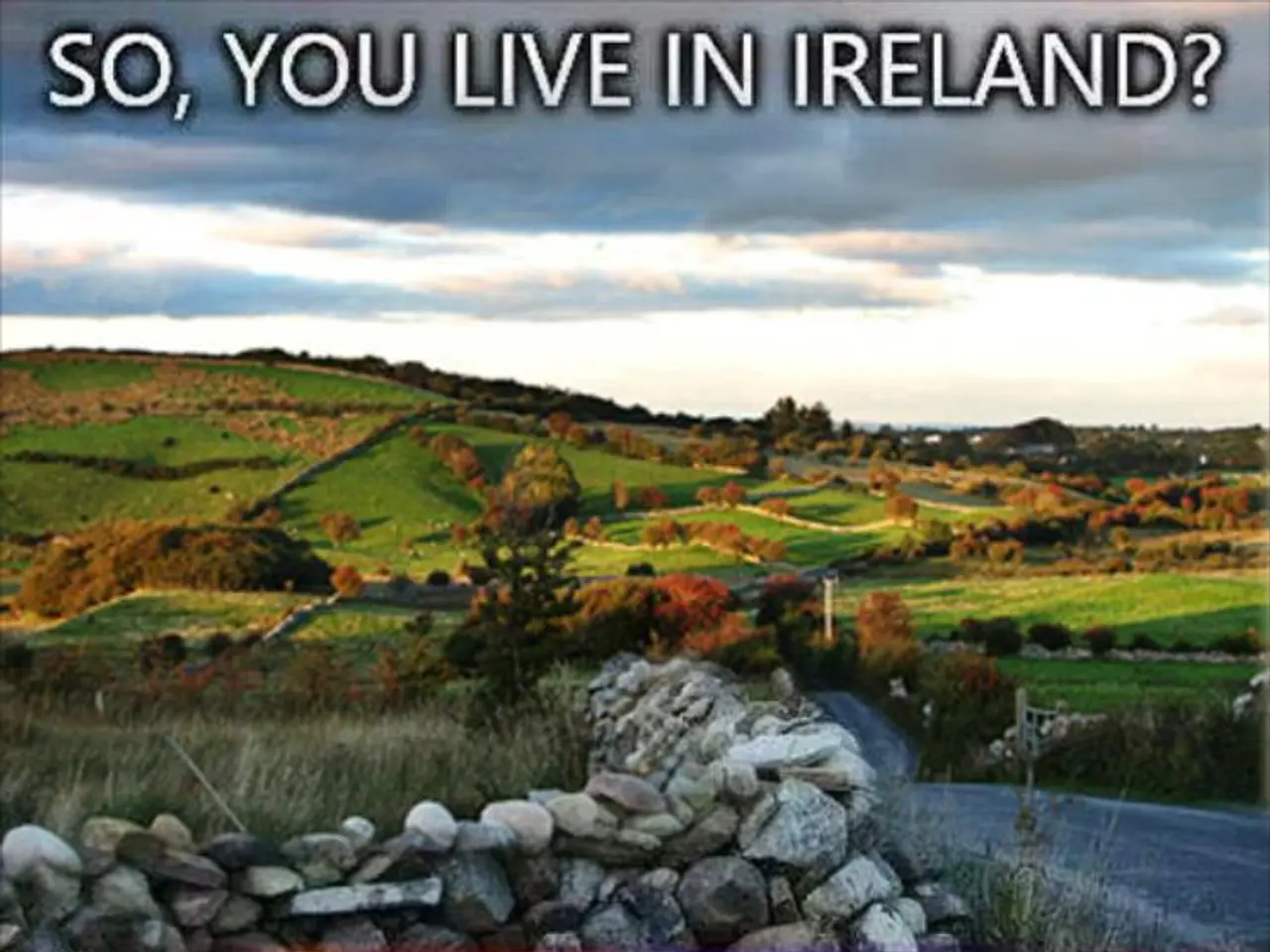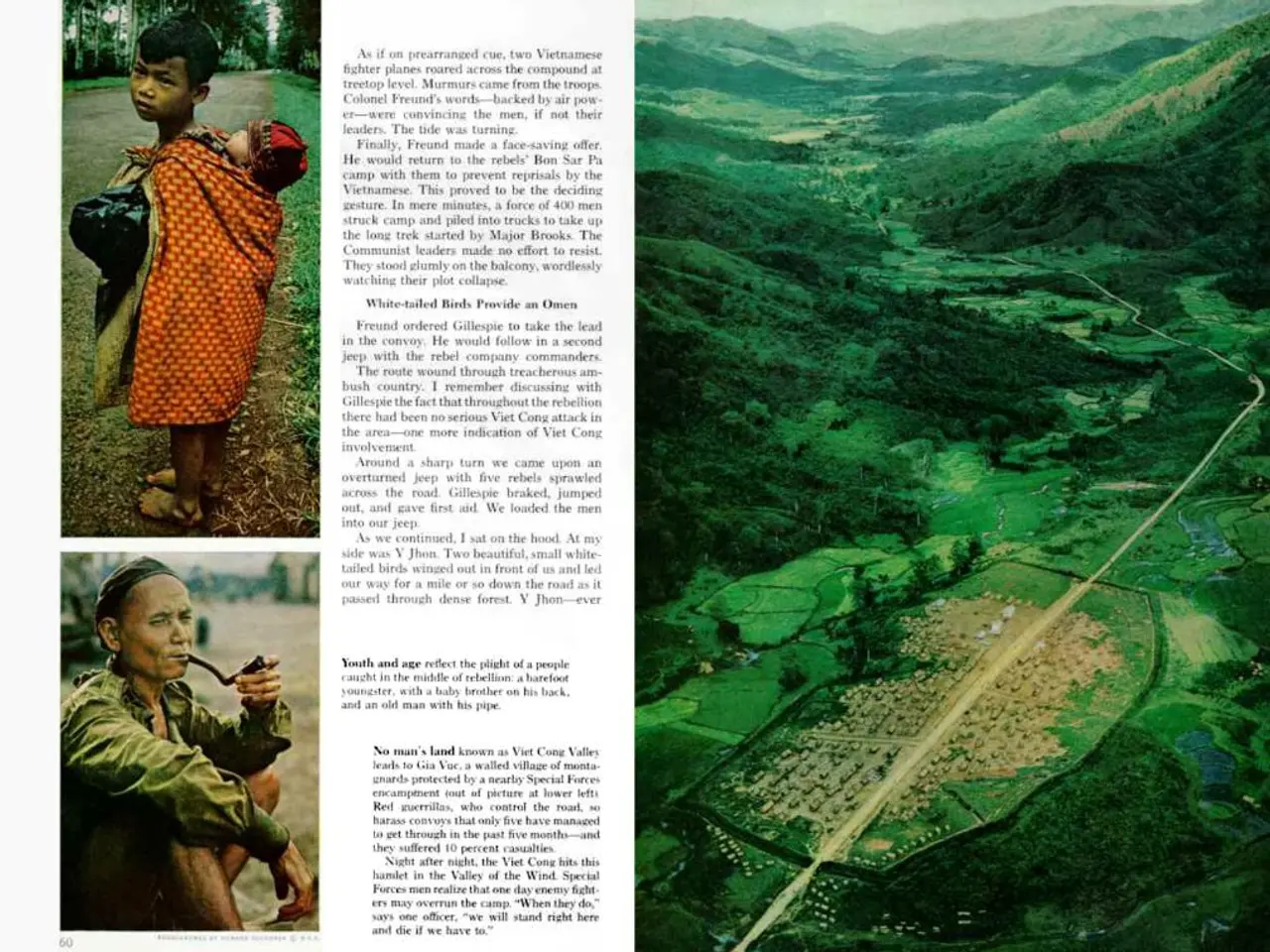Massive wildfire in France surpasses the area of Paris and continues to expand
In the heart of southern France, the picturesque village of Saint-Laurent-de-la-Cabrerisse played host to a sombre gathering as French Prime Minister François Bayrou met with firefighters and residents. The meeting came amidst the ongoing battle against France's largest wildfire in nearly 80 years, which broke out in the Aude region in August 2025.
The wildfire, which has ravaged an area larger than Paris, has caused widespread destruction, resulting in one death and multiple injuries. The blaze, which has burned over 17,000 hectares (about 42,000 acres), has been strongly linked to the effects of climate change, with extreme heat, drought, and strong winds facilitating its rapid spread.
The Aude area and the surrounding Corbières region, renowned for their vineyards and wine production, have been severely affected. The fire has devastated large rural areas, including forests and vineyards, destroying agricultural land along with homes and infrastructure. The disruption and damage to these industries are expected to be significant, although detailed economic losses have yet to be fully quantified.
The wildfire has forced evacuations of entire villages, closure of forest areas, and disrupted local life, significantly impacting tourism, especially ecotourism and wine tourism, during the peak summer season. Road blockages and damaged infrastructure further hindered access to the area, compounding negative effects on tourism. The smoke and poor air quality from the fires affected residents and visitors within 30–50 km, creating health hazards and likely discouraging tourism activities.
Prime Minister Bayrou visited the region to express "national solidarity" and to assess the situation firsthand. He noted that the fire was likely connected to global warming. Scientists warn that climate change is exacerbating the frequency and intensity of heat and dryness in the region, making it more vulnerable to wildfires.
As firefighters continue to battle the blaze, several water bomber aircraft are being used to help contain the fire. An investigation is ongoing to determine the cause of the fire. In the meantime, residents and tourists in nearby areas have been requested to remain in their homes unless told to evacuate.
Europe, the world's fastest-warming continent, has seen multiple large fires this summer. The wildfire in France's Mediterranean region near the Spanish border is the biggest this summer. Southern Europe has been experiencing a drought this month, with water use restrictions in place. The lack of rainfall "played a major role in the spreading of the fire, since the vegetation is very dry."
Despite the challenges, the area's economy, heavily reliant on winery and tourism, is showing resilience. Recovery and rebuilding remain ongoing challenges, but the spirit of the community remains undeterred. As the fire continues to burn, the hope is that the region will once again flourish, offering its unique charm and beauty to visitors from around the world.
- The wildfire in France's Aude region, connected to global warming, has destructively impacted the environment, particularly the vineyards and forests, causing significant economic losses in the region's agricultural and tourism industries.
- Climate change, by exacerbating heat, drought, and dryness, is making regions like the Aude area more vulnerable to wildfires, as suggested by environmental scientists.
- The ongoing wildfire in southern France, with a large portion of its damage attributed to climate change, serves as another stark reminder of the wide-ranging consequences of climate-change on the environment, economy, and general news.
- As wildfires continue to be a growing concern due to climate change, policy-and-legislation and politics will need to shift towards stronger, more effective strategies and regulations in order to combat their increasing frequency and intensity.
- Amidst the struggles with the wildfire in France, ongoing discussions in environmental-science and climate-change research become increasingly vital to understanding and addressing the vulnerabilities created by these extreme natural events.








